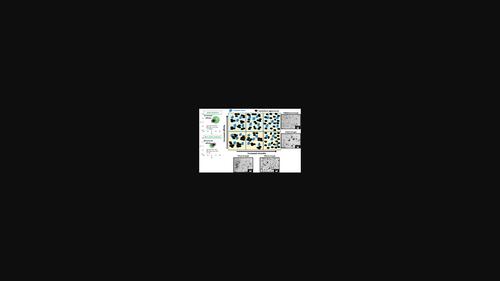当前位置:
X-MOL 学术
›
Can. J. Chem. Eng.
›
论文详情
Our official English website, www.x-mol.net, welcomes your
feedback! (Note: you will need to create a separate account there.)
Asphaltene/polymer composites: Morphology, compatibility, and rheological properties
The Canadian Journal of Chemical Engineering ( IF 1.6 ) Pub Date : 2022-07-20 , DOI: 10.1002/cjce.24564 Afrooz Eshraghian 1 , Milad Kamkar 1 , Uttandaraman Sundararaj 1
The Canadian Journal of Chemical Engineering ( IF 1.6 ) Pub Date : 2022-07-20 , DOI: 10.1002/cjce.24564 Afrooz Eshraghian 1 , Milad Kamkar 1 , Uttandaraman Sundararaj 1
Affiliation

|
In this study, we investigate the use of asphaltene, a natural waste product that is inevitably formed during heavy oil processing, as a filler in polymer composites. The focus of this work is on the compatibility of various asphaltenes, featuring different polarities, with several polymers, including polypropylene (PP), polystyrene (PS), polymethyl methacrylate (PMMA), and polycarbonate (PC). The Hansen solubility parameters were plotted to predict the compatibility of polymers with different asphaltenes. Then, polymer composites were prepared by two common techniques: melt mixing and solution mixing. The dispersion state of the asphaltenes in each polymer was investigated by using imaging and rheological techniques. This work showed that the network structure of the asphaltenes and, thus, the final properties of the composites can be controlled by the polarity of asphaltenes, mixing technique, and melt viscosity of the polymer. For instance, more polar asphaltene (Asph P) produced smaller aggregates in PMMA, which has a higher polar solubility parameter than PP or PS. At 2.5 wt.% of asphaltene, Asph P showed 26% and 177% larger asphaltene agglomerates in PP and PS, respectively, than the less polar asphaltene (Asph Al). PS/asphaltene and PMMA/asphaltene composites prepared by the solution mixing method exhibited better dispersion compared to their melt-mixed counterparts. In melt-mixed composites, the dispersion quality of the asphaltene was better for polymers with higher melt viscosity. Thus, a careful choice of polymer, asphaltene, and preparation conditions can be used to tune the properties of asphaltene/polymer composites.
中文翻译:

沥青质/聚合物复合材料:形态、相容性和流变性能
在这项研究中,我们研究了沥青质(一种在重油加工过程中不可避免地形成的天然废物)作为聚合物复合材料中的填料的用途。这项工作的重点是研究具有不同极性的各种沥青质与多种聚合物的相容性,包括聚丙烯 (PP)、聚苯乙烯 (PS)、聚甲基丙烯酸甲酯 (PMMA) 和聚碳酸酯 (PC)。绘制汉森溶解度参数以预测聚合物与不同沥青质的相容性。然后,通过两种常用技术制备聚合物复合材料:熔融混合和溶液混合。通过使用成像和流变技术研究沥青质在每种聚合物中的分散状态。这项工作表明,沥青质的网络结构,因此,复合材料的最终性能可以通过沥青质的极性、混合技术和聚合物的熔体粘度来控制。例如,更多极性的沥青质 (Asph P) 在 PMMA 中产生更小的聚集体,其具有比 PP 或 PS 更高的极性溶解度参数。在 2.5 wt.% 的沥青质下,Asph P 在 PP 和 PS 中的沥青质团聚物分别比极性较小的沥青质 (Asph Al) 大 26% 和 177%。通过溶液混合法制备的 PS/沥青质和 PMMA/沥青质复合材料与其熔融混合对应物相比表现出更好的分散性。在熔融混合复合材料中,对于具有较高熔体粘度的聚合物,沥青质的分散质量更好。因此,仔细选择聚合物、沥青质和制备条件可用于调整沥青质/聚合物复合材料的性能。
更新日期:2022-07-20
中文翻译:

沥青质/聚合物复合材料:形态、相容性和流变性能
在这项研究中,我们研究了沥青质(一种在重油加工过程中不可避免地形成的天然废物)作为聚合物复合材料中的填料的用途。这项工作的重点是研究具有不同极性的各种沥青质与多种聚合物的相容性,包括聚丙烯 (PP)、聚苯乙烯 (PS)、聚甲基丙烯酸甲酯 (PMMA) 和聚碳酸酯 (PC)。绘制汉森溶解度参数以预测聚合物与不同沥青质的相容性。然后,通过两种常用技术制备聚合物复合材料:熔融混合和溶液混合。通过使用成像和流变技术研究沥青质在每种聚合物中的分散状态。这项工作表明,沥青质的网络结构,因此,复合材料的最终性能可以通过沥青质的极性、混合技术和聚合物的熔体粘度来控制。例如,更多极性的沥青质 (Asph P) 在 PMMA 中产生更小的聚集体,其具有比 PP 或 PS 更高的极性溶解度参数。在 2.5 wt.% 的沥青质下,Asph P 在 PP 和 PS 中的沥青质团聚物分别比极性较小的沥青质 (Asph Al) 大 26% 和 177%。通过溶液混合法制备的 PS/沥青质和 PMMA/沥青质复合材料与其熔融混合对应物相比表现出更好的分散性。在熔融混合复合材料中,对于具有较高熔体粘度的聚合物,沥青质的分散质量更好。因此,仔细选择聚合物、沥青质和制备条件可用于调整沥青质/聚合物复合材料的性能。











































 京公网安备 11010802027423号
京公网安备 11010802027423号